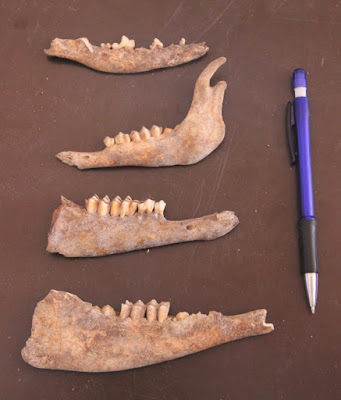The team of the 2nd phase. Two are missing, one possibly trying to get out of pit 80 and the other wondering around with a machine in hands.
An example of the complexity of middle Neolithic ditches, suggesting the periodic building of ditched enclosures in the same general area.
An example of the cutting of a middle Neolithic ditch by a late Neolithic one (ditch 5).
The end of ditch 5 under Chalcolithic deposits and structures. Possibly a gate.
Two sections of Chalcolithic circular structures dismounted during the Chalcolithic. A deposit separate them, and another deposit is under the lower one.
That last deposit is against the face of the wall. This is showing a sequence of construction of these stone structures during the Chalcolirhic.
Pit 80 is getting deeper. Who knows me knows I am a Beatles fan. And this pit reminds me of a song from Pepper's: "It's getting better all the time", where Lennon sang in the back: "it can get no worse"
And finally, the column has already about 70 cm.
See you next year (if not before).




















































